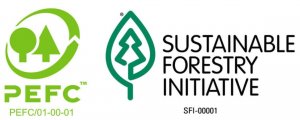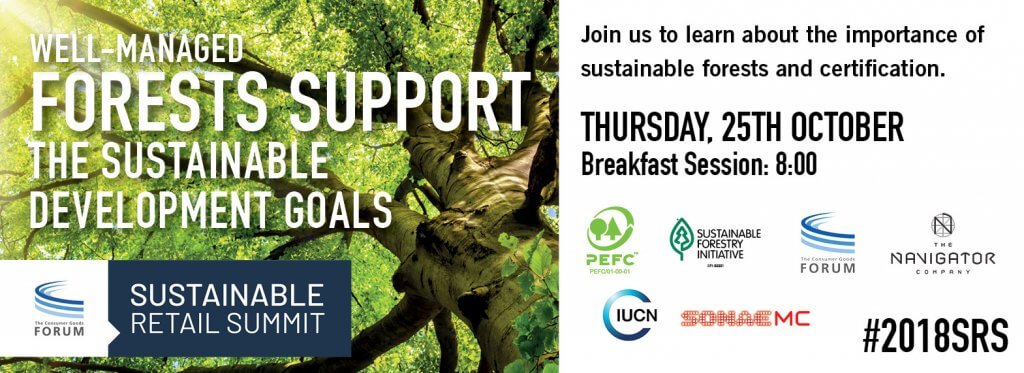Well‑managed forests provide many of the elements necessary for life on earth — air, water, food and shelter. Moreover, wood itself is one of the most renewable raw materials available and it’s found in many of the products procured or manufactured by CGF members.


In addition, forest certification plays an essential role in measuring outcomes relative to sustainability goals. As certified forest material moves through the global supply chain, an accounting system called chain-of-custody tracks forest fibre content through production and manufacturing to the end product. As a result, companies are able to report their sustainable sourcing material certified to PEFC and SFI. Forest certification also enables companies to promote their good practices through the PEFC and SFI labels on products, which help consumers make responsible choices.
With forests providing multiple benefits, goods and services, forest certification is officially recognized as an indicator towards achieving the UN Sustainable Development Goals (SDGs), specifically Goal 15 (Life on Land). This goal aims to “protect, restore and promote sustainable use of terrestrial ecosystems, sustainably manage forests, combat desertification, and halt and reverse land degradation and halt biodiversity loss.”
But the contribution of forest certification goes beyond this and positively impacts all 17 SDGs, and in particular also Goal 6 (Clean Water and Sanitation), Goal 12 (Responsible Production and Consumption), Goal 13 (Climate Action), Goal 16 (Peace, Justice and Strong Institutions), and Goal 17 (Partnerships for the Goals).
PEFC and SFI are working to highlight the clear links between forest certification and the SDGs. Both programs are also continuing to build on their positions as the world’s fastest-growing market leaders in certification. PEFC accounts for 61% of the world’s certified forests. SFI, which is recognized by PEFC, is the largest single forest management standard in the world and represents 25% of the world’s total certified area.
The theme of this year’s Sustainable Retail Summit, Implement Today for a Sustainable, Healthier Tomorrow, fits perfectly with sustainable forest and certification. Representatives from CGF, IUCN, Sonae MC, The Navigator Company, SFI and PEFC will speak in more detail on this topic during the breakfast session on Thursday morning.
This blog post was co-authored by:
Fabienne Sinclair
Head of Marketing
PEFC International
Daniel Pellegrom
Vice President Communications
SFI, USA




